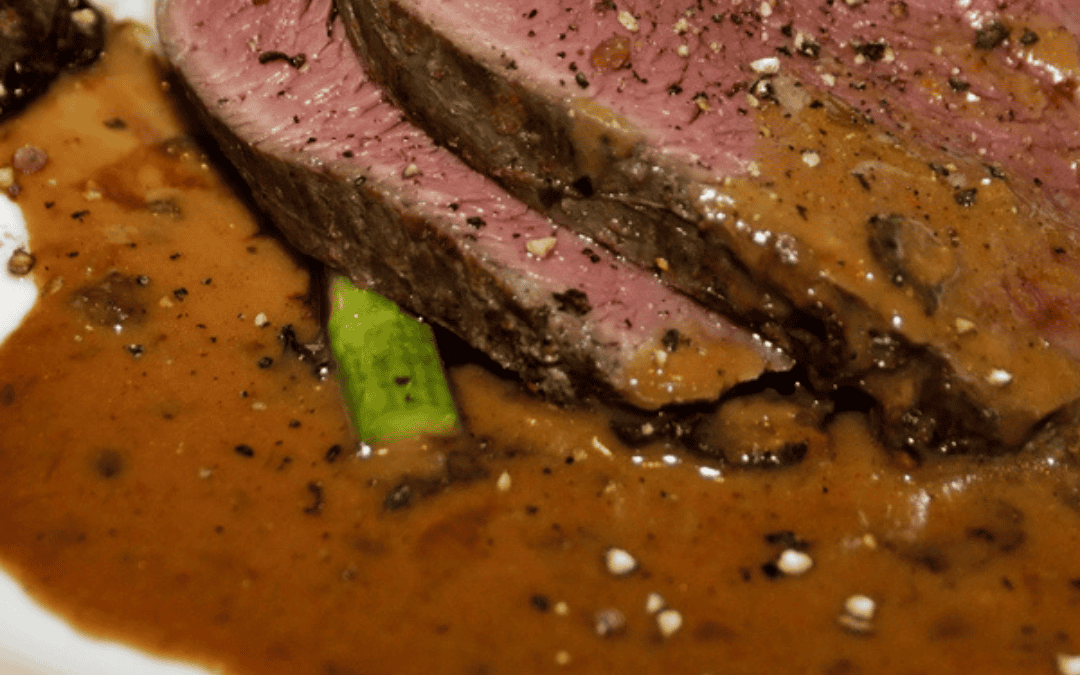You are reading a paid Steam Oven Insiders member newsletter. Insiders newsletters drop into your inbox on the 15th and 30th of each month.
Are you a newbie Insider?? You can find all previous newsletter issues when you log in to your Insiders dashboard. They’re a wealth of information!
Hello!
In a loose kind of follow-on from last issue’s steamed eggs topic, today I want to introduce you to the fantastic world of easy custards and sauces using your steam oven. Many are egg-based, hence the follow-on, but you don’t need to have read the eggs newsletter to make use of today’s information.
I don’t make any secret of the fact that I want all of you to make the absolute most of what your steam ovens can offer, and sauces are a great way to up your game.
From classic English style custard or creme Anglaise, to Hollandaise, Bearnaise and on to fruit curds, jus and purees, there’s a way to prepare almost any sauce using your steam oven. And even better than that, most are easier to make and require less laborious stirring or whisking than their traditionally-made counterparts.
I hope this topic encourages you to try something new, or to try a different way of cooking a sauce you’ve always made ‘the old way’. I’d love to hear about it when you do, and as always, I welcome any follow-up questions you have!
Happy steam oven cooking, see you in a couple of weeks,
Emily x
Topic of Interest: Sauces and Custards in a Steam Oven
Sauces and custards are the basis for or the crowning glory of many European-style dishes.
They’re an addition to a cook’s repertoire that traditionally requires a keen eye for detail and temperature control, and a lot of manual effort by way of whisking or stirring. In other words, they’ve always been the domain of very confident cooks.
But you lucky people can make custards and sauces in your steam ovens! Ones that are every bit the real thing, only with less effort and consistently repeatable results. There’ll be no panic about split hollandaise or scrambled custard, just smooth and silky sauces that dress up your dinners and desserts with ease.
Recipe of the Edition
Steam Oven Hollandaise Sauce
If you love eggs Benedict or asparagus dipped in Hollandaise, but you’ve never made your own batch of this classic French sauce, you are in for a treat with this simplified, sous-vide/steam oven version.
Luxuriously buttery and rich, here we’re going to make Hollandaise by piling all the ingredients into a jar and low-temp steaming. Blending at the end will emulsify everything and create the silky smooth texture that’s the hallmark of a perfect sauce.
This is every bit a classic Hollandaise sauce, made foolproof and easy with your steam oven.
The Season Flip
A couple of lovely dishes where sauce is the star!

Southern Hemisphere
I usually give you a main meal in your season flips, but I have lemon curd sitting in my fridge right now and all I can think about is these little meringues with sweet and sour curd. So dessert it is! The linked recipe is more for inspiration; I’m going to buy meringue nests and use my steamed curd for a super easy weekend dessert with friends.

Northern Hemisphere
Steak with Bearnaise Sauce
Sometimes it’s the very simple dishes that are hardest to get right. A great steak with sauce is way up on that list, but you’re going to use your steam oven for both! A lovely meal at any time of year, but especially in cooler weather, my sous vide steak and this Bearnaise sauce will put a French bistro classic on your table with confidence. You can prep most of the components ahead of time ready to heat and serve later.
Ask Me Anything (AMA)
Here’s your opportunity to ask me anything you like related to combi steam cooking!
I really encourage you to submit questions, and will do my best to answer as many as possible. Though I may not be able to get to every single question, I will carefully curate ones which are relevant and represent a variety of topics. We all learn from each other, and I often learn new things based on questions from all of you!
If you have an AMA question, please email it to [email protected]. Make sure you include the phrase INSIDERS AMA in the subject line so I can collate and read all your submissions.
From Lisa
Q: I would love to do a whole wheat bagel. Any suggestions on swapping whole wheat flour for white flour in your NY Bagel recipe?
Question 2 – I still find making good baguettes very elusive. Seems like it is never the same problem. Either the crust is wrong, the crumb is wrong, lack of spring upon putting them in the oven. You name it, I have probably seen it. Can you point me in the correct direction?
A: Yes, you can definitely swap out flour to make whole wheat bagels from my recipe (anyone looking for said recipe, that’s here).
My recommendation is not to use all whole wheat, as it makes a very densely textured bagel that’s not great to eat. For a lighter whole wheat bagel, switch out a quarter of your white flour for whole wheat. For a more obviously whole wheat bagel, switch out half the flour. You’ll almost certainly need more water to account for the extra fiber in the whole wheat flour, but because these flours vary so much in composition from brand to brand, it’s hard to say exactly how much. I’d just add a couple of tablespoons of water at a time until you get a nice elastic dough.
Now on to baguettes; they are indeed very elusive, and notoriously hard to get right! I confess to not baking them very often, so perhaps I need to devote a future issue to getting them right and sharing the results (duly noted!). 😉
What I can say is that whatever recipe or dough you’re using, there are a couple of standout things which can help/hinder with baguettes:
First, the flour itself. French flours seem to be more finely milled, with a medium protein content and an almost golden, very wheaty tasting finish. So a good French flour may change things. Second, and critically, baguettes are all about the crust. While you really want steam while baking to help with crust formation, if the moisture content in your baguettes is too high, even the best and crunchiest crust will soften on cooling. Think of it as the crust pulling the residual moisture from the crumb. That’s partly down to your dough hydration (an enormous topic to cover), and partly down to ensuring you bake until the bread is deeply golden brown, which indicates that it’s cooked enough on the inside.
I hope that points you some way to better baguettes; you may also be interested in this detailed baguette article from Serious Eats, which doesn’t talk about steam ovens but does go deeper into some of my points above.



